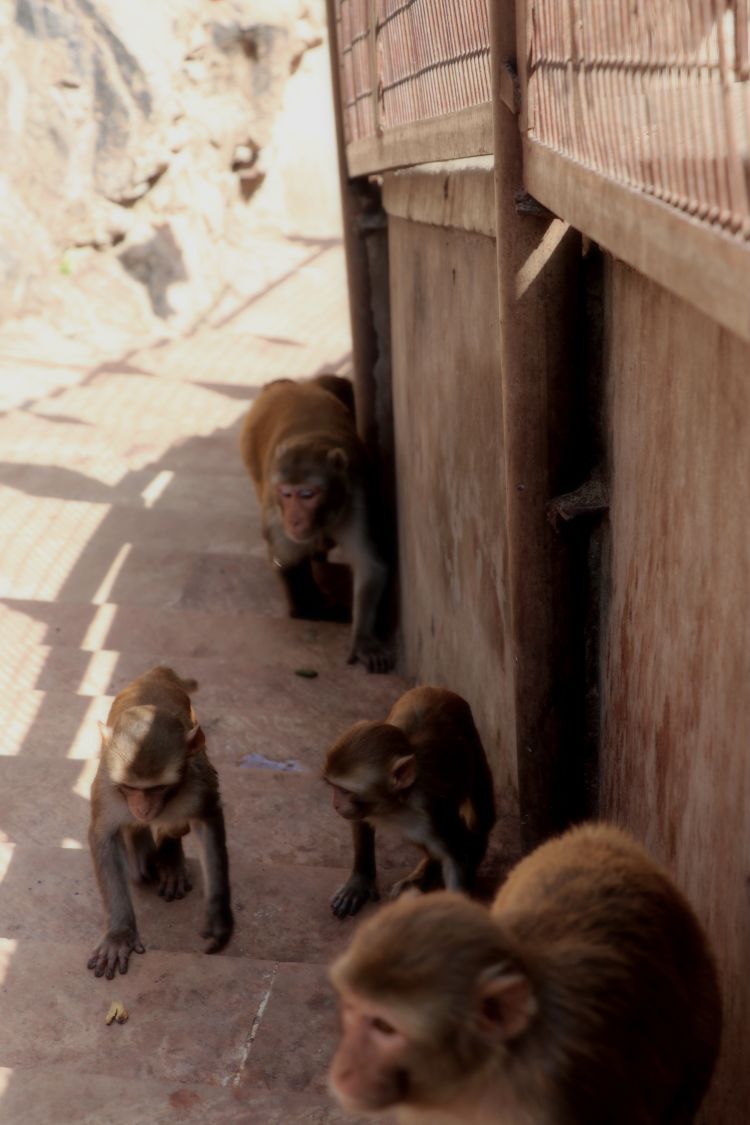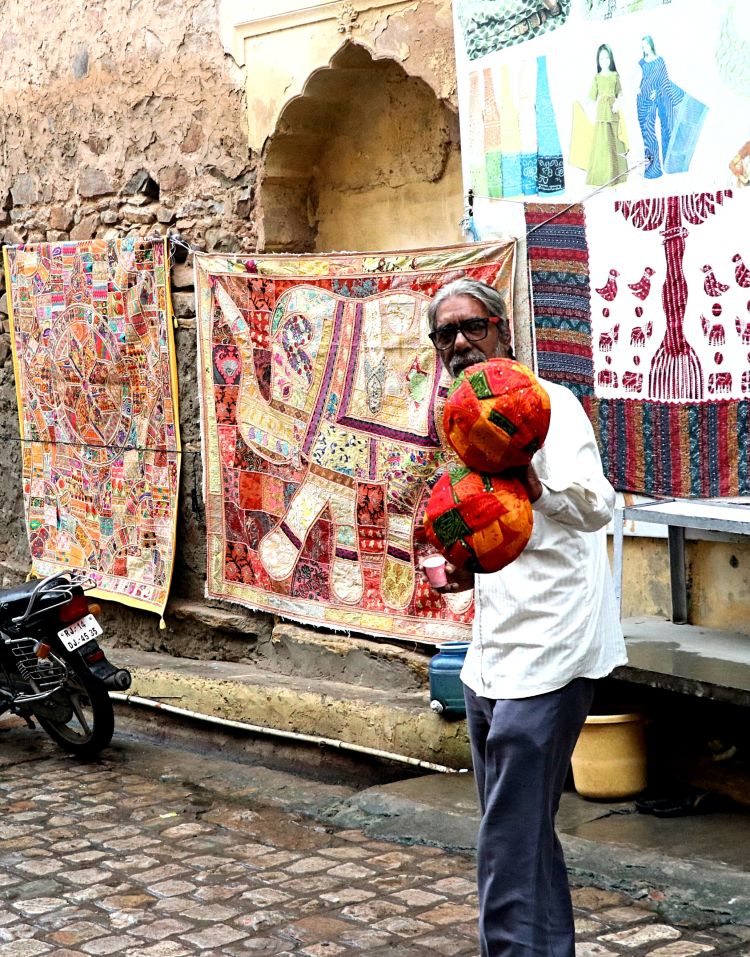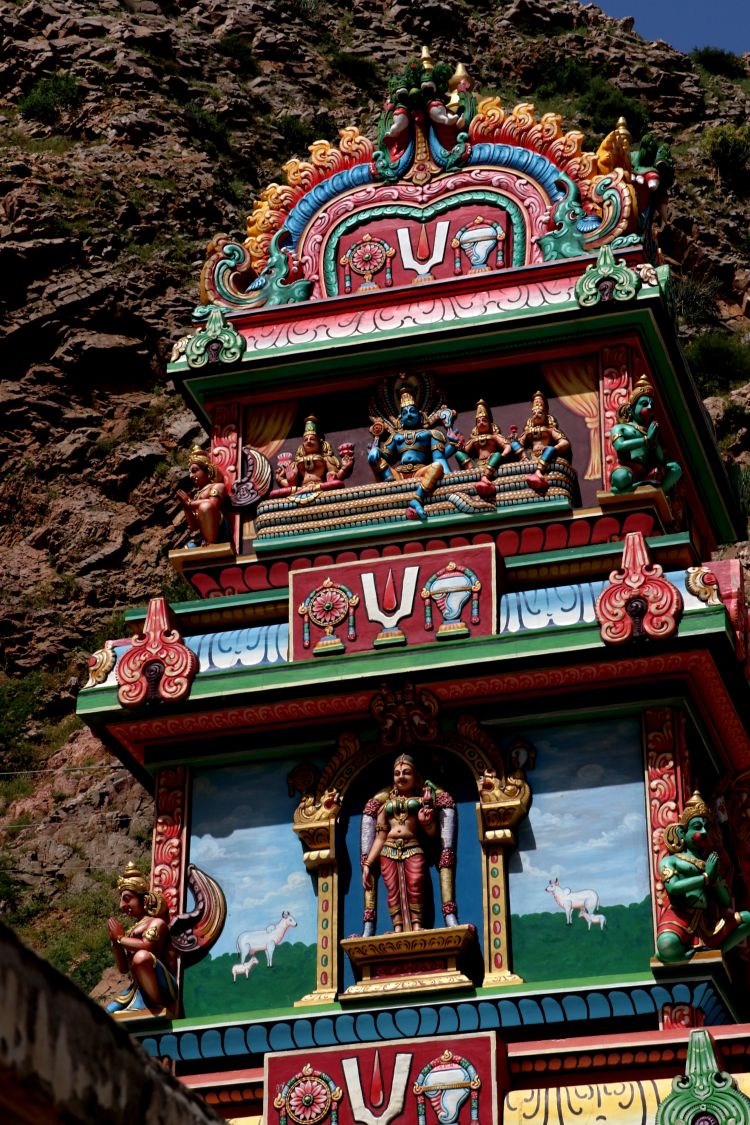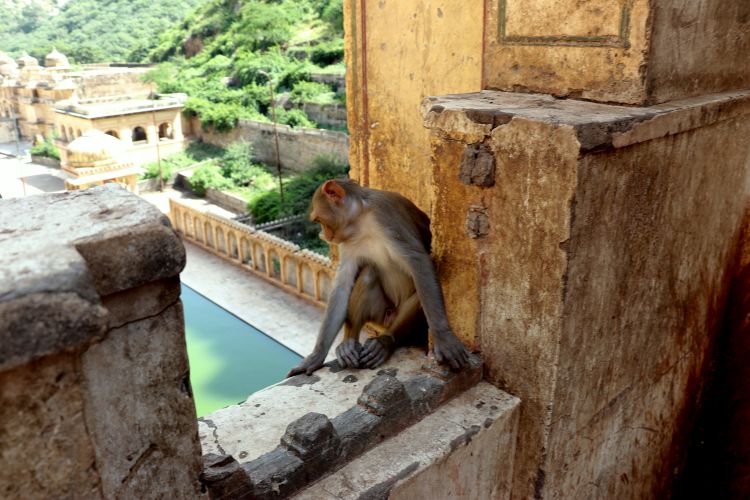Symbiosis Part 1
The Mutuality of Culture and Religion in India
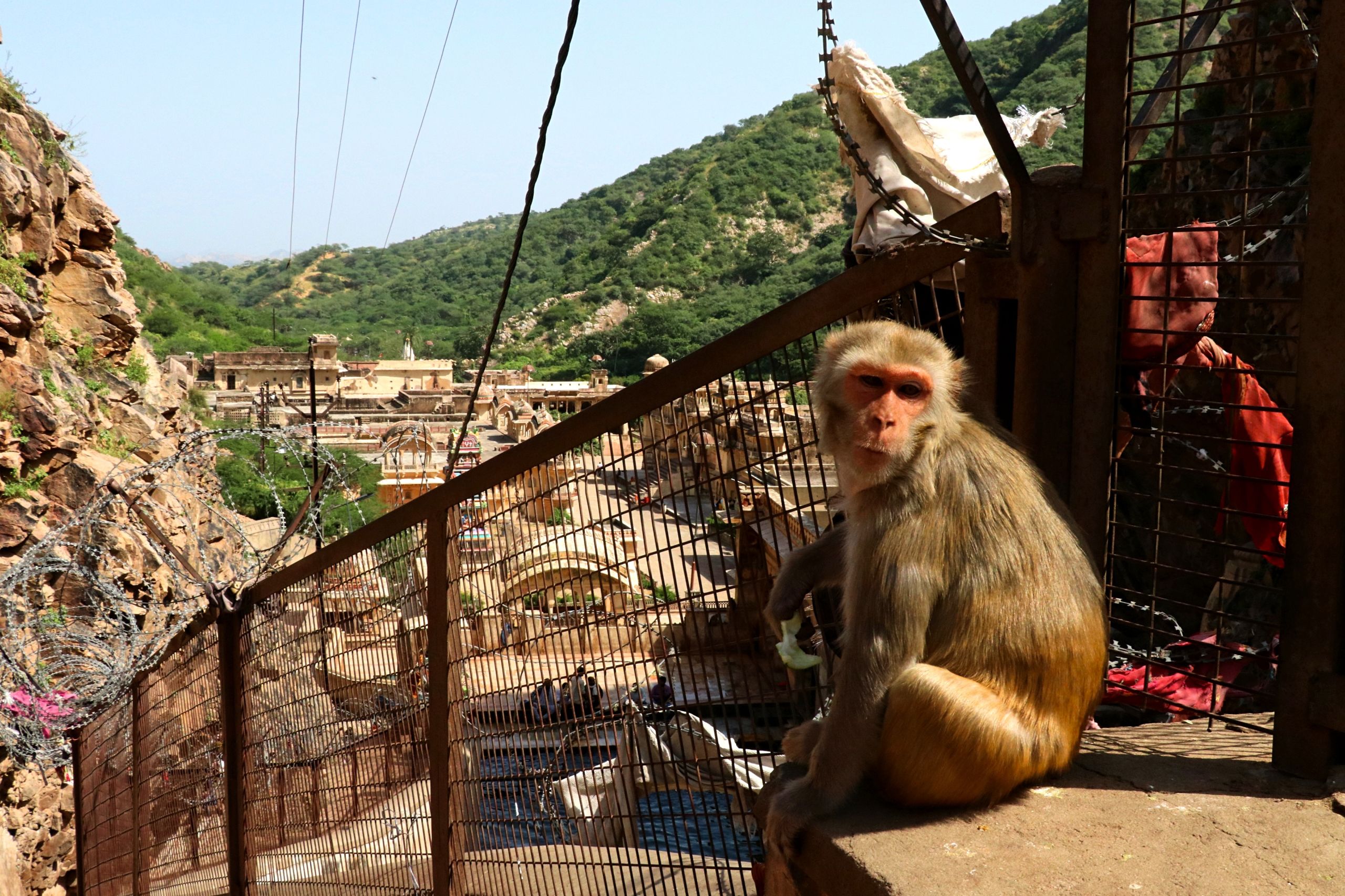
The Pilgrims flock to the temples at Galtaji.
The pilgrims flock to the temples at Galtaji. They come in numbers. Their faces are red, some, and they push through the crowds – frantic, scampering. Others meander through the gates, and up the many stairs, towards the Galta Kund. And at the Kund, the pilgrims drink. They cup their hands, and they raise the water to their lips. They worship the Galta Kund; it is special.
Not once, since its construction, has the Galta Kund run dry. The water is sacred see. It is said to cleanse the soul, to reconcile sins, to redeem. But it is not meant for drinking. It is not safe for human consumption. And yet these pilgrims were fine.
How?
That is easy.
The pilgrims were not human; they were monkeys – a specific breed of Macaques that famously inhabit the temples.
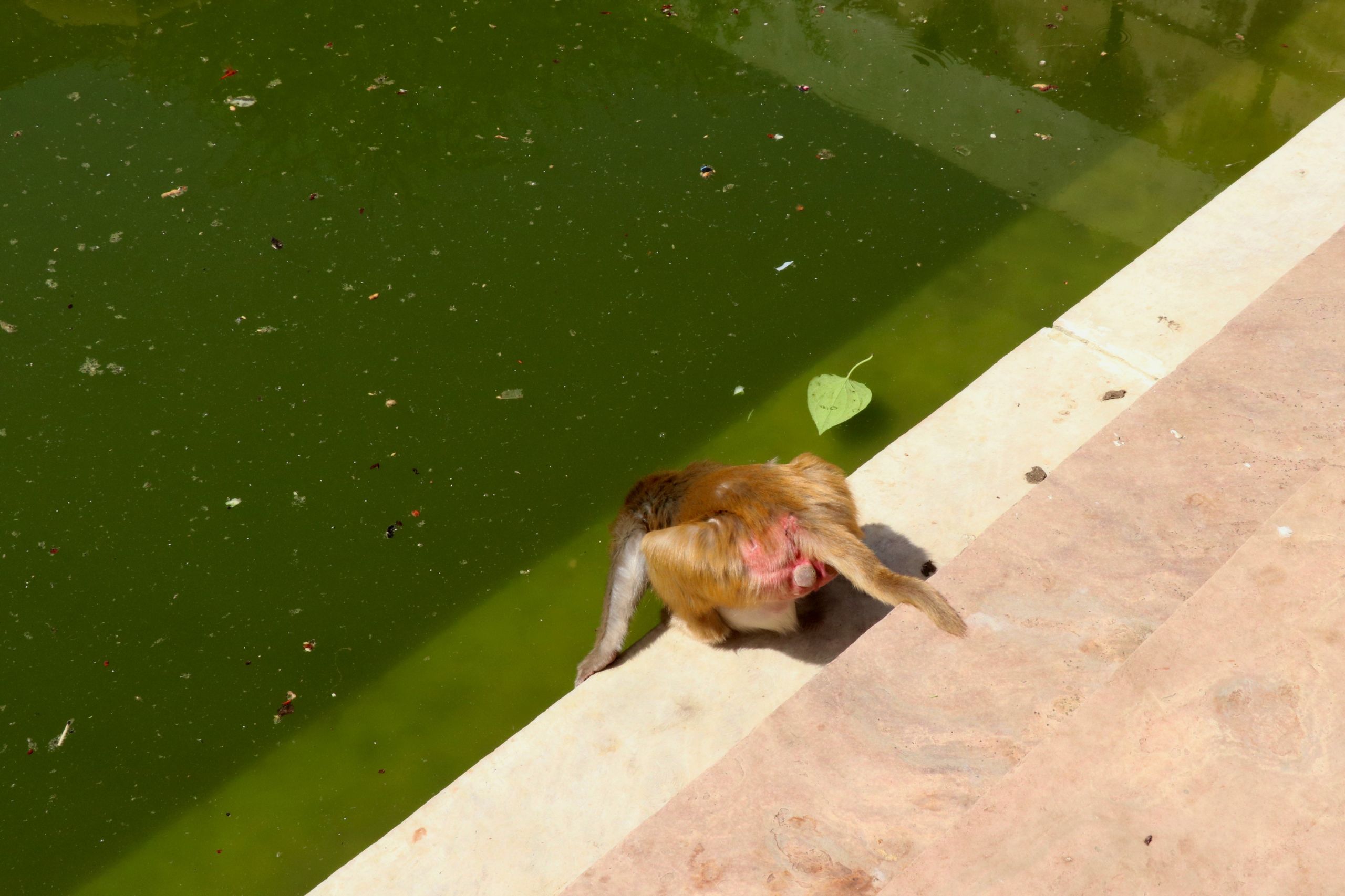
What brought the monkeys there I did not know.
Perhaps it was the water of Galta Kund. Perhaps it was the scraps and foodstuffs left by passers-through. Or perhaps it was something else: an energy, a sense of faith and spirituality that permeated the place.
I asked Cheshta Mathuria about the monkeys. Cheshta was a student at Amity University who had been assigned to accompany me during my travels of Jaipur. She was, at first, my translator and guide. By then, she had become my close friend.
“Why do the monkeys come here?” I asked.
Cheshta said simply: “I do not know. But this is where they are. And they have been here for a long time.”
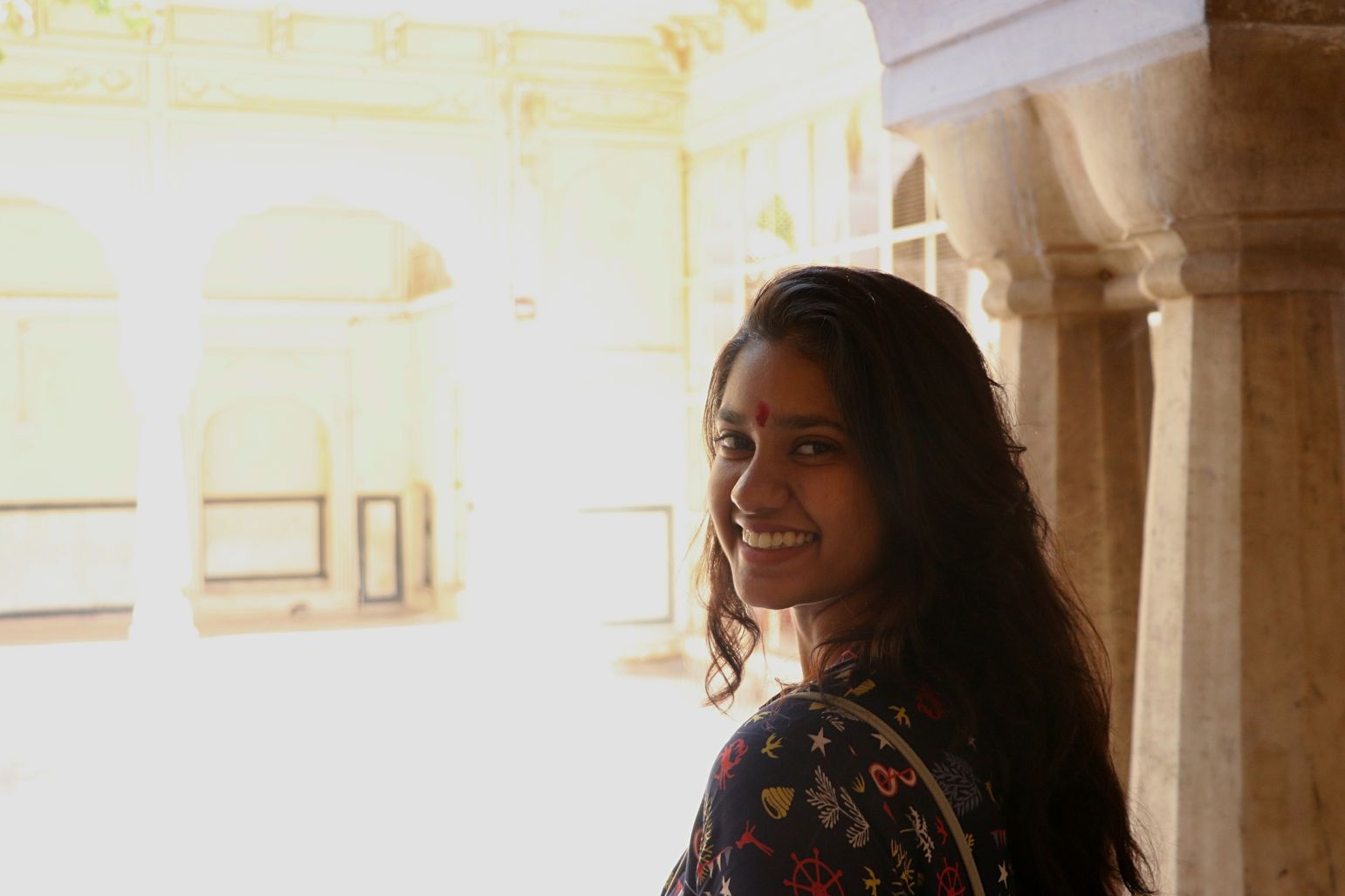
Cheshta Mathuria at Galtaji.
Cheshta Mathuria at Galtaji.
The monkeys at Galtaji are famous – more so than the temples and the Kunds and the waters and the folklore of spiritual cleansing. Travel literature tells of the “rebel monkeys” and their habits of stealing food; it calls Galtaji “The Monkey Temple”.
The monkeys, they bring tourists. And the tourists, like monkeys, flock to the temple. Some are red-faced, perhaps exhausted from the Indian heat or, even, frustrated with the man at the gate charging a 500 rupee fee to anyone wishing to bring a camera to the location. Others are slack-jawed and open eyed – stunned at a landscape that I am not properly equipped to describe.
But I will try.
It was blue skies and green nature the likes of which you’ve never seen. They stood over grounds brown and starved of water. And between these extremes of nature were the temples – equally extreme and equally majestic – extending from the grounds into the skies as if some architect of old had made an effort to reach, literally, up to God – or the Gods (because there are many in India).
It was, for want of a better word, holy.

However, for tourists and travellers this holiness is lost among the squabble to feed and photograph the macaques. Despite being one of Rajashtan’s most popular tourist destinations, the “Monkey Temple”is misrepresented by western travel literature. It is not one temple; it is a series thereof, and these temples are dedicated to a number of Hindu deities:Ganesha, the elephant God; Hanuman, the monkey god; and Surya, the sun god. his place is more than these monkeys,”said Cheshta Mathuria “People, they journey from very far to bathe in the spring. It is holy. It never runs dry.”
The journey Cheshta spoke of is Makar Sakarnti, an age-old act of worship that occurred annually and continues, still, to this day. During Makar Sakarnti, pilgrims – this time human – trek for any number of days, weeks and even months to bathe in the Galta Kund.
This is the significance of Galtaji.
For the people of Jaipur – and indeed, the entire country of India – it is a place of reverence: a place where holy springs can cleanse the soul, a precinct where Hindu’s can worship many gods:Hanuman, Ganesha, Surya. And, because of its religious significance, Galtaji has gained a unique place in Jaipur’s culture.
“For us, there is religion in everything,” said Asif, President of Hathi Gaon, Jaipur’s renowned Elephant Village.
I had asked Asif whether Hathi Gaon’s fame could be attributed to Hinduism (India’s most popular religion) and specifically to Ganesha worship. He told me this: “People come here for many reasons. People come here to pray. People come here to look. You people[tourists] come to see elephants.”
It was the same sentiment I observed at Galtaji that is, namely, a divide between locals and travellers, a divide, it seemed, that stemmed entirely from religious understanding.
I asked Asif to comment on the purposes with which westerners and locals visit Hathi Goan; I asked him to explain the cultural divide.
But he did not.
Instead, he smiled and nodded and told me that “[Indians] love elephants too”.
“And why do we love elephants?”
“Because religion.”
Asif did not mean that he, himself, worshipped elephants or Ganesha. He did not worship those gods. Asif, as it goes, was Muslim.
“He means that elephants are important to India, and to Indians. To him, to me, to anyone. Regardless of religion.” Cheshta said this; she was translating as Asif spoke Hindi.
“But he said he loved Elephants because of religion?” This was me. I said this.
“Yes,” said Asif, speaking English again, “because of religion in the past.”
India has, historically, revered elephants. The reverence stems from the country’s Hindi roots and particularly from the God, Ganesha. A positive deity of wisdom and intellect, Ganesha was, and is still, held in high esteem by adherents.However, reverence of Ganesha exceeded the Hindu faith to exist in the country’s attachment to the elephant. Elephant imagery is salient in Indian textiles and sculptures. The underlying reason for the popularity of this imagery – overlooked as it may be – is the symbiosis of culture and spirituality.
See, like the Galta Kund, the spirituality of India never dries. It runs eternally, flowing from its various sources, through the Indian people. Ancient Hindu traditions have rooted themselves in the Indian culture. And they remain present still evident in the behaviours of the Indian people – regardless of their individual beliefs. It is the case with animals; it is the case with temples. It is also the case with the country’s proverbial arms: always open, always welcoming.
Like the love of elephants, and the reverence of Galtaji, the ancient Hindu tradition of Atithi Devo Bhava has transcended religion to become a part of wider society. Nowadays, it is a government initiative. But, once, it was religious.
Taken from the sanscri, Atithi Devo Bhavalooks like this:
अतिथिदेवो भव
In English, it looks like this:
"be one for whom the guest is God."
And in reality, it looks like this:
I, Tobias Jurss-Lewis, the writer of this story, am walking in the rain. A man in a tuk-tuk stops next to me. He tells me to get in. I say no; I do not have the money. The man in the tuk-tuk says,
“No money, sir. You are my guest. My name is Samir. Tell me about your home and I will show you mine.”
I did not ask Samir about his religion.It did not seem important. What seemed important was that this stranger had taken me out of the rain, through his city and to his house. He had offered me food and drink. He had dropped me back to my hotel. And, after it all, he had refused my payment.
Why?
Because it was his pleasure; because I was his guest.
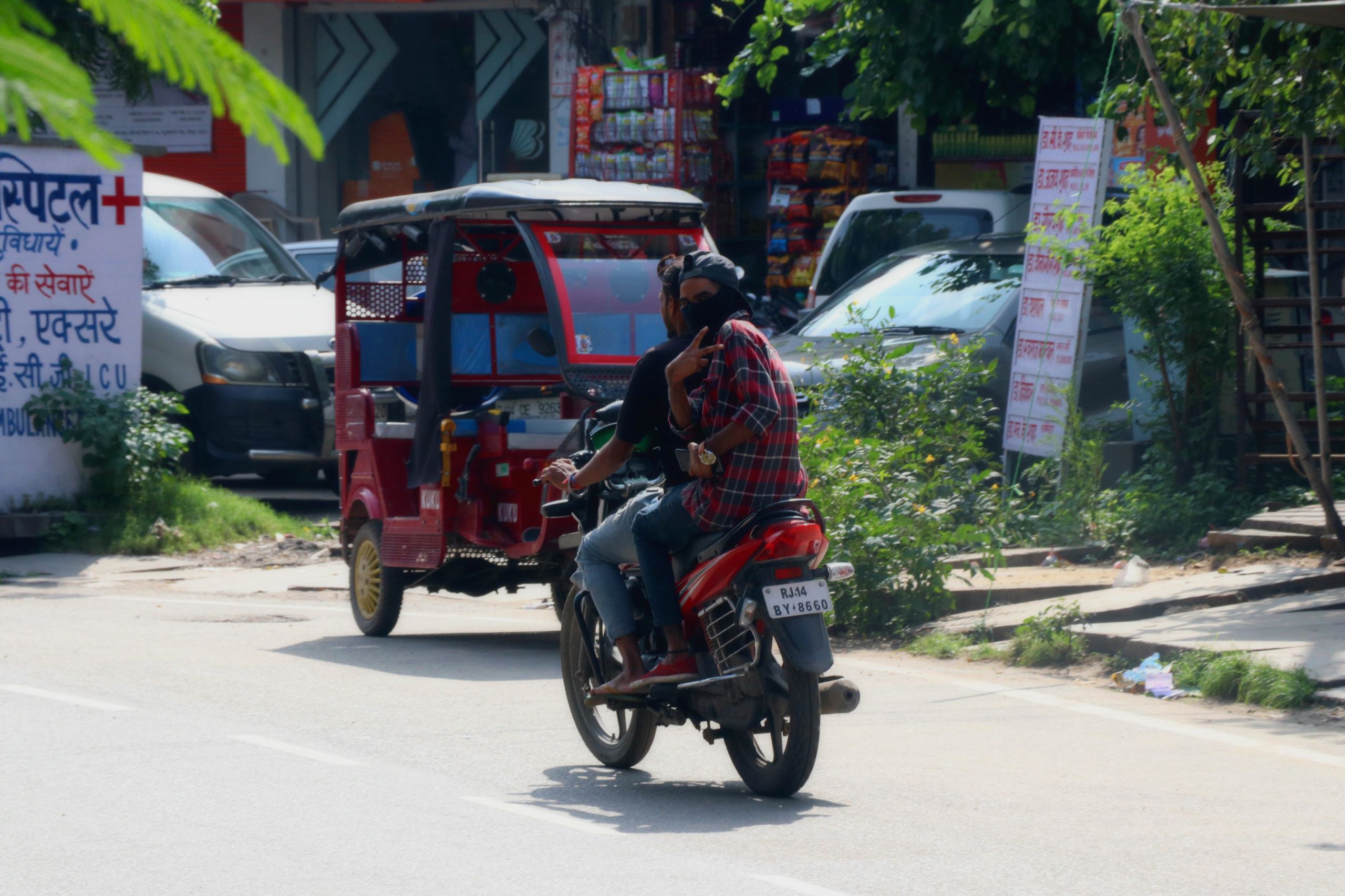
“We have seen Christian rule, Muslim rule.During these rules Hindu traditions were repressed. But still, they survived… The result is that these things that were once intrinsically religious, are now simply seen as Indian.”
Vaibhav Sharma, a student and religious pundit, told me this. He spoke, also, about religious diversity in his country and the history that yielded it.
“Buddhism, Sanatanism, Seikism, Jainism: they stem from the same, original thought process. They are all part of our history. These religions, they came to be and they learned to live in harmony…
“That is what we believe. We believe in harmony, in mutual respect.”
I used the word tolerance.
“No,” he said correcting me promptly. “We do not believe in tolerance. We believe in mutual respect. I do not tolerate you; I respect you…”
The mindset is not unique. Or so Vaibhav claimed. “It is prominent across the country. It comes from our history, from our belief in dharma.”
Dharma, as it goes, is the path or action that brings you highest happiness. As Vaibhav says, “fire’s dharma is to burn”. Dharma is each person’s, each animal’s, each thing’s way of living their right life. And at the heart of Indian culture is a belief that by following their dharma, a person is living correctly.
“We do not care about the path, or the means, simply the end, the goal. You follow your dharma; and as long as you are fulfilling your duty, I have no problem with you.”
This was a philosophy I saw time and time again during my stay in Jaipur.
I saw it in Asif and his refusal to comment on the traveller’s ignorance. I saw it in the priest’s and monks at Galtaji who welcomed, so heartily, the travellers who saw their temple as a zoo. I saw it, even, in Cheshta and her colleagues at Amity University who gave such effort to educating me and never once ridiculed me in my, often lumbering, attempts to assimilate. I saw it in Samir and in Vaibhav and in every man and every woman I spoke to.
Truly, it seems that this philosophy (of respect and mutual understanding) has shaped India into the nation that we see today: one of immense respect and diversity.
It has created a society where religion and culture are intertwined – to the extent that at times the two are inseparable – where temples and proverbs and beliefs surpass religion. It has, from a westerner’s point of view, created something truly unique.
However, just as the nation has been shaped, it is being shaped still. India’s uniqueness has been sculpted by many forces over many, many lifetimes.
These forces continue.
The impact of globalisation and the influx of western beliefs will undoubtedly impact the future of the country.

